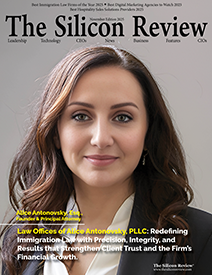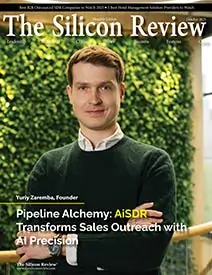>>
Industry>>
Automobile>>
Tesla's Robotaxi Debut Redefin...Tesla's Robotaxi Debut Redefines Urban Mobility Infrastructure
The Silicon Review
08 April, 2025
Tesla’s unveiling of its fully autonomous Robotaxi fleet sets the stage for a seismic shift in U.S. transportation, as cities prepare for AI-powered vehicles to reshape the future of mobility and industrial automation.
On March 22, 2025, Tesla officially introduced its long-anticipated Robotaxi fleet—an autonomous, AI-driven vehicle line designed to operate without a human driver. The fleet is expected to begin commercial operations in select U.S. cities by late 2025, marking a critical milestone in the automation of personal and shared mobility. Far more than a showcase of autonomous driving technology, Tesla’s Robotaxi platform is a disruptive play at the intersection of transportation, software, and infrastructure. These vehicles are not simply electric—they’re designed to self-navigate dense urban areas using Tesla’s proprietary neural network, real-time sensor fusion, and adaptive AI models. The company claims these systems have achieved a level of operational reliability ready for public deployment.
From an industrial automation perspective, this announcement is as much about the systems behind the scenes as it is about the cars themselves. Tesla’s Robotaxi initiative will require seamless coordination between cloud data centers, smart city networks, and edge-based AI computing embedded within each vehicle. That convergence of automation domains will catalyze adjacent industries—from urban planning and fleet management to insurance modeling and predictive maintenance systems. For automakers and infrastructure players, the pressure is mounting to evolve rapidly. Tesla’s rollout could reset expectations around vehicle ownership, human labor in transit services, and regulatory frameworks. Cities must now prepare for mixed traffic environments, where autonomous fleets interact with traditional vehicles and pedestrians in real time.
With the Robotaxi project, Tesla isn’t merely selling a new car—it’s launching an automated transportation ecosystem that could outpace regulatory adaptation and industry readiness. For business leaders and technologists alike, the implications are profound: mobility is no longer about horsepower or hardware—it’s about algorithms, autonomy, and the ability to scale intelligence across moving networks.
_2025-11-17_06-38-14.webp)


 (1)_2025-10-21_13-35-14.webp)

_2025-10-02_10-21-48.webp)
